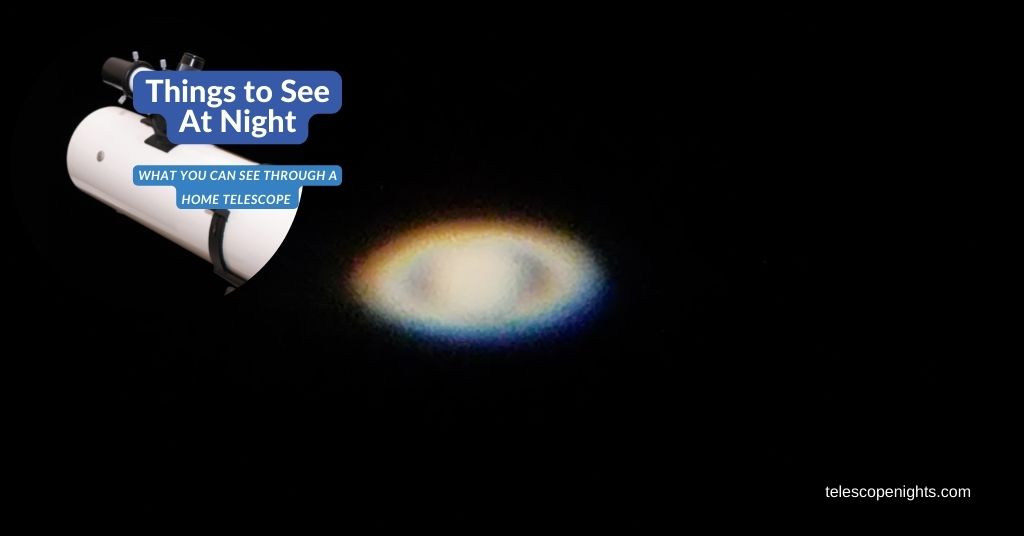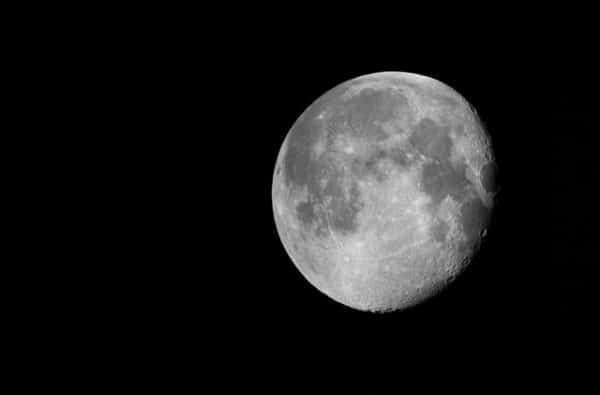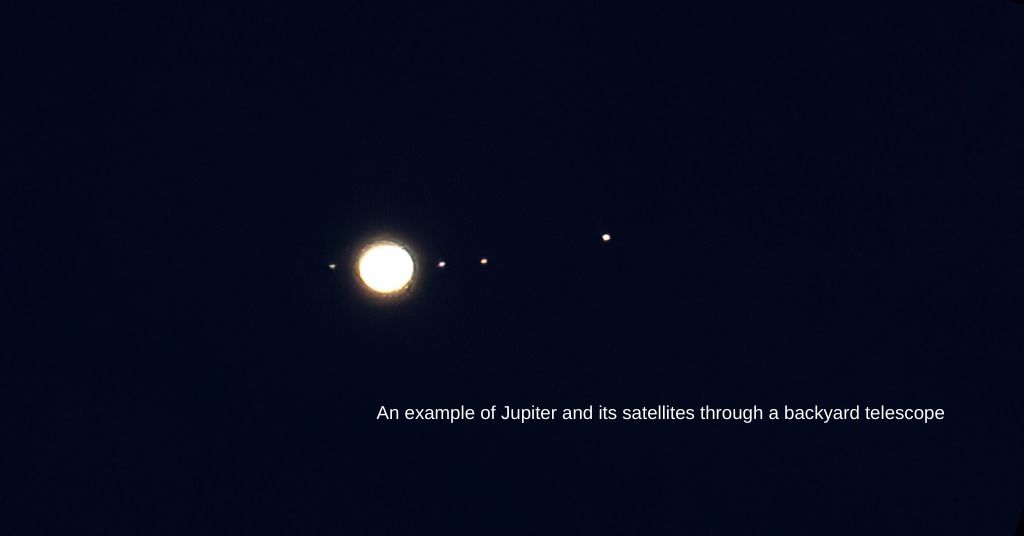What can you expect to see with a home telescope? If you are looking to buy or are just starting to use a telescope as a beginner or one for a child, here are some basics to expect and what you can have fun viewing.
First up, I want to be realistic. We see jaw-dropping impressive images on social media and the Internet of the planets, galaxies, and nebula. Most of these are taken with highly sophisticated equipment. Realise that these Hubble type images are not quite what you will get to see through a home telescope. But… you’ll still get to see awe-inspiring stuff.

With a telescope, you’ll see billions of celestial objects that you only faintly see with the naked eye or not at all. The sky will appear more speckled, a whole lot different, believe me. It won’t feel familiar at all, at first and expect to feel a little bit disorientated.
The more time getting out there and ‘doing’ counts towards enabling you to see more through your home telescope. What you see and whether the object appears fuzzy or not, will depend not only on your gear and your experience, but also on the atmospheric conditions at the time. Just a few things to be aware of at the start.
Here’s you can see with a home telescope
Through a home telescope you can see tons of Moon surface features, the moons and rings of planets, far-off star systems, galaxies, and more. Part of what you can see, is knowing when and where to look, gaining experience, and having the right set of gear, with worthwhile accessories and quality optics.
Moon observations
If you’re a beginner, you can’t go wrong starting with Moon observations. The distance to the Moon is just over one light second and the Moon is second to the Sun as the brightest object in our sky. Its close, so you should easily see its features. For children especially, it’s a good way to get them familiar with telescopic equipment and the universe.
Craters are what most people ‘see’ as a first impression of the Moon. But there are many other features, including the lunar mare and rilles (long narrow depressions in the surface). From Earth, you’ll only ever see the near side of the Moon because the Moon’s rotation is in sync with that of the Earth. Don’t expect to see the far side of the Moon.
The view of the Moon differs between our hemispheres. In the southern hemisphere you’ll see a different orientation of what you’d see in the northern part of our globe. So, from Australia, the shadowy part looks more of “a rabbit” than “a man in the moon”. For more on Moon observations, see my article on the Moon that includes the best Moon phases for stargazing.

The Planets of Our Solar System
From Earth, you can spot several planets with the naked eye. They appear as bright stars in the sky, at varying times. Sky maps will help you identify these and where and when to look. Using a telescope to view planets you’ll get to see more of their details, similarly with binoculars for astronomy.
Mercury and Venus
Mercury and Venus are two inner planets closest to the Sun. They are terrestrial planets, meaning they are rocky in contrast to the outer gaseous planets of Jupiter, Saturn, Uranus, and Neptune.
Mercury is tricky to see. It is the smallest planet, closest to the Sun, and has a tight orbit. You’ll see it at certain times of the year hugging the horizon either after sunset or before sunrise. For dates, see my article on what to know about viewing Mercury.
Venus, easily seen with the naked eye and better known as the morning or evening star, can be best seen through a telescope in the twilight time of early morning and late afternoon near the horizon. Venus has a cloud blanket as I explain in my article, what Venus looks like through a telescope.
Mars
Mars is the second smallest planet in the system. It is another terrestrial planet. On average, it is 12.5 light minutes from Earth.
Mars will appear as a small reddish disk. If you want to see more, the white-ish pole and dark markings, you might need to invest in a good quality eyepiece, think about buying a filter for Mars, and try for clear atmospheric conditions. For more information, see my article on viewing Mars through a telescope.
Jupiter
On first look of Jupiter, you’ll see a whitish disk and possibly some brownish bands. You’ll get a better view of Jupiter with an 8″ aperture and taking time to observe, as I explain in my article on seeing Jupiter through a telescope.
Relaxing your eyes and allowing them to respond to the faint markings can bring to light the different shades of the Jovian disk. Jupiter’s four main moons will appear like very bright stars on either side of Jupiter. You can have fun watching their position change, which I cover in my article about the Jupiter’s moons.

Saturn
Take your time with Saturn, relax your eyes, and allow them to adjust and pick up the rings of Saturn. On a small telescope this might look like bulges, with Saturn appearing like a football.
With an 8″ telescope you might get to see up to five of its moons. With the larger telescopes in this range, you may even see on a good night, Cassini’s Division, which is a black circle appearing between Saturn’s A and B rings.
Uranus and Neptune
Of our solar system planets, these are farthest from Earth. They are not visible with the naked eye. They will appear as specks through the telescope. With decent magnification, they may appear as disks and you may detect some color, such as a pale blue or greenish color.
The Sun
Through a telescope fitted with proper solar filters, you can watch the progress of a solar eclipse or sunspot activity. But NEVER look at the Sun without solar filters as you risk permanent damage to your eyes.
Stars
There are many types of stars in space and the night sky viewed through a telescope will be unrecognizable as it is littered with so many of them. Outside the solar system, Alpha Centauri is the closest star system to Earth. It is some 4.4 light-years away, but you can see Alpha Centauri A and Alpha Centauri B of this system. It’s useful to know a star’s brightness, expressed as apparent magnitude, to know the stars you can see through a home telescope.
Galaxies and nebulae
The deep space objects, galaxies and nebulae, will appear fuzzy. However, by training your eye with practice and with much patience, you may eventually see more. Filters that can help with viewing nebulae include narrowband ones like UHC and OIII filters. From Australia, the Large Magellanic Cloud, is the brightest galaxy to see. In the northern part of our globe, it is Andromeda.
Stargazing basics
Distances in the universe are in light years. And typically, you’ll be looking at between a few hundred to up to many millions of light years. That in itself is mindblowing. To think that what you are looking at, may no longer exist.
Apart from the quality and specs of your telescope and accessories, other factors such as, atmospheric conditions and your level of experience, will affect your view. A dark location will provide the best views. I recommend using a red flashlight for checking charts etc. rather than a standard light so as to maximize your night vision.
The Earth’s atmosphere can be a huge limiting factor on what you see, creating motion and distortion. This limitation (due to Earth’s atmosphere) affects even the high magnification telescopes. Under average sky conditions, some say magnification gets no better past 250×. This will differ with location. Also, what you see in the night sky differs between the hemispheres.
Final thoughts
A home telescope is worth investing in as it will broaden your world and open you to new perspectives. The benefit of the above knowledge is that in knowing these things you will be less likely to become frustrated and more likely to spend the time in training your eye to see and learn more about the huge expanse above you.
If you’re new here and starting out with astronomy, be sure to check out our Beginner’s Page where you will find helpful guides and tips to get more out of your stargazing experience.
Or, see our Buyer’s Guide Section if you are looking to buy astronomy gear and need some help sorting through the numerous options.
